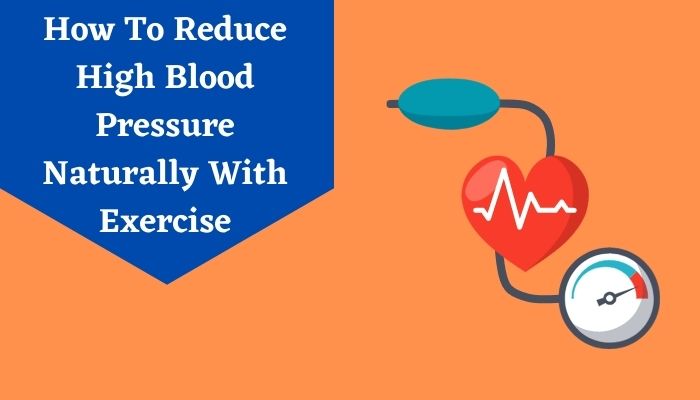Mrs. Sen (45-years-old) is a teacher and lives in Kolkata. Mrs. Sen has been diagnosed with high blood pressure or hypertension for the past 6 months. Mrs. Sen consulted a doctor and the doctor has given him some medications and also advised her to do some exercises for high blood pressure. Apart from taking medications, Mrs. Sen has been doing the best exercises for high blood pressure for the past 6 months, and now, she has managed to control her blood pressure.
High blood pressure or hypertension will enhance the risk of heart disease and stroke. Weight management, exercise, and a wholesome diet are the prime treatment methods for hypertension. If your blood pressure is already on the higher side, exercise will help you to control it.
Does Exercise Lower Blood Pressure?
Regular exercises will make your heart healthy and stronger. A sturdier heart can easily pump more blood without much effort. As a result, the force on your arteries diminishes which minimizes your blood pressure.Normal blood pressure is less than 120 mm Hg for systolic and less than 80 mm Hg for diastolic. If you become more active, both your top and bottom blood pressure numbers will decrease. Several studies have claimed that exercise will help you in minimizing the reductions from 4 to 12 mm Hg diastolic and 3 to 6 mm Hg systolic.
By doing regular exercises, you can also maintain a healthy weight. This is another pivotal way to control blood pressure. If you are obese, then by losing 5 pounds (2.3 kilograms), you can minimize your blood pressure. To maintain healthy blood pressure, you should exercise regularly. It will take one to three months for regular exercise to show an impact on your blood pressure.
Also Read: How to Treat Your High Blood Pressure at Home With A Healthy Lifestyle
Some of the Best Exercises to Lower Blood Pressure
1. 10 Minutes Brisk or Moderate Walking Three Times A Day
Exercise is effective in minimizing your blood pressure by lessening blood vessel stiffness. This helps blood to flow more easily. The effects of exercise are mostly visible during and immediately after a workout session. After your workout, your blood pressure will be reduced.So, healthcare experts often recommend breaking your workout into various sessions throughout the day to minimize your blood pressure. One medical study has revealed that 10-minute walks a day (3 times) are more effective in averting your future blood pressure than one 30-minute trek per day.
2. 10-Minutes for Biking or Stationary Cycling, or 3 to 10-Minutes Blocks of Cycling
The same reason is applicable here also. All these cycling and biking activities will decrease blood pressure naturally.Moreover, these will help keep your heart healthy.
3. Hiking
To enhance your level of fitness, you need to climb a road on an incline, a hill, or a mountain.Physical activity like hiking will lessen your blood pressure by up to 10 points.
4. Desk-Based Treadmilling or Pedal Pushing
To manage your blood pressure, you can go for desk-based treadmilling or pedal pushing. One medical study has proved that blood pressure readings were optimized when participants strolled along at a slow 1-mile-per-hour pace at desk-based treadmills for 10 minutes every hour or cycled stationary bikes for at least 10 minutes every hour.5. Weight Training
Weight training or lifting is also effective in reducing your blood pressure. Though strength training will uplift the level of your blood pressure temporarily, it is beneficial for overall fitness. In this way, it will gradually decrease your blood pressure level.6. Swimming
A medical study has claimed that this type of exercise is effective in controlling blood pressure in adults (60 years and above). The study was conducted for 12 weeks on swimmer-participants where they did continuous swimming for up to 45 minutes at a time. At the end of the study, all participants have reduced their systolic blood pressure by nine points.The benefits of exercise will be noticed if you do it regularly without taking any break. The experts usually recommend moderate exercise for 150 minutes per week or forceful exercise for 75 minutes per week to manage your blood pressure.
When You Should Take Your Doctor’s Advice?
Before plunging into an exercise program, check with your doctor whether you can start it or not.You should be very careful if you have the following:
- Chronic illnesses like diabetes, heart disease, or lung disease
- You have high cholesterol or high blood pressure
- History of heart attack
- Have a family history of heart problems before age 55 in men and age 65 in women.
- You feel discomfort or pain in your chest, jaw, neck, or arms during activity.
- Getting dizziness with activity
- You smoke or recently quit smoking
- You are obese
- You have some health issues and still doing exercise
Stop your exercise if you feel
- Chest, neck, jaw, or arm pain
- Heaviness in your chest
- Dizziness or faintness
- Severe shortness of breath
- An uneven heartbeat
The Bottom Line
If you have a hypertension problem, start exercising as early as possible to reduce your pressure. But this doesn’t imply that you need to go to the gym regularly to manage your blood pressure. The only thing you can do is you should be a little more active so that you can breathe harder and make your heart beat faster.








